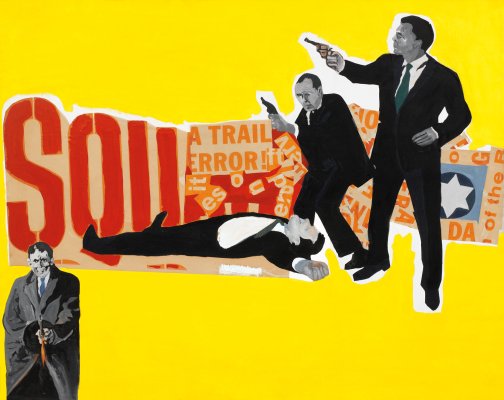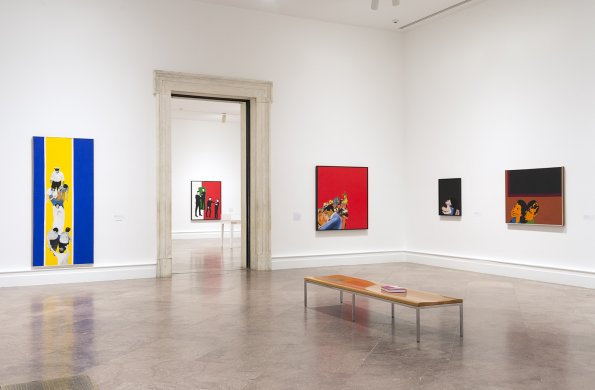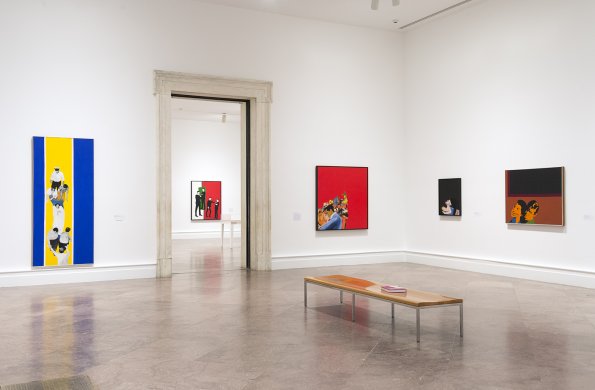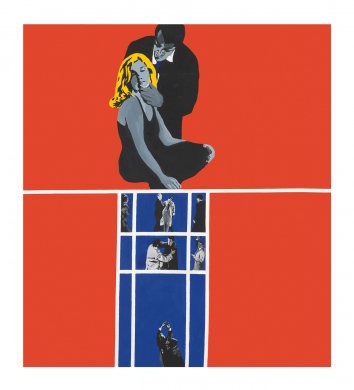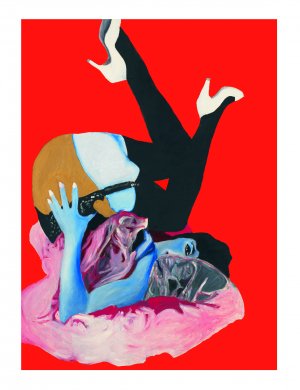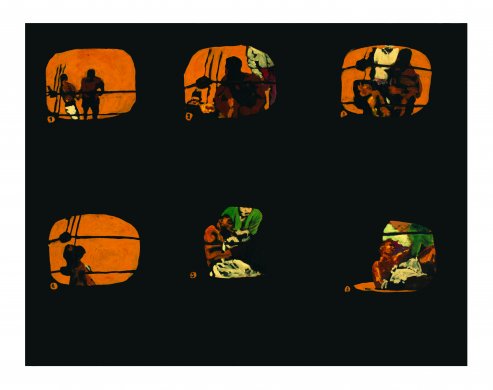On the occasion of Rosalyn Drexler: Who Does She Think She Is?, we are taking a closer look at several of the works in the exhibition. This week: The Defenders, 1963.
Rosalyn Drexler extended her observations of the representation of violence in society in a series of works featuring gangsters, businessmen, and law enforcement officials. She borrowed images from film posters, sales catalogs, newspapers, and television, looking at fictional representations of tough guys as well as real-life fistfights and shootouts.
The Defenders combines a variety of familiar cinematic types: three lawmen, attired in natty suits and ties, are pitted against the gun-wielding, trench coat–wearing mobster. Drexler treats found text in the same way as found visuals: as a source for partial citations and fragments. Her preference for roughly collaged elements distinguishes Drexler from some of her better-known Pop contemporaries, who celebrated the slickly painted and the factory made, and links her to the assemblage aesthetics of environments and Happenings, which blossomed in the avant-garde circles with which she was associated in the late 1950s.
